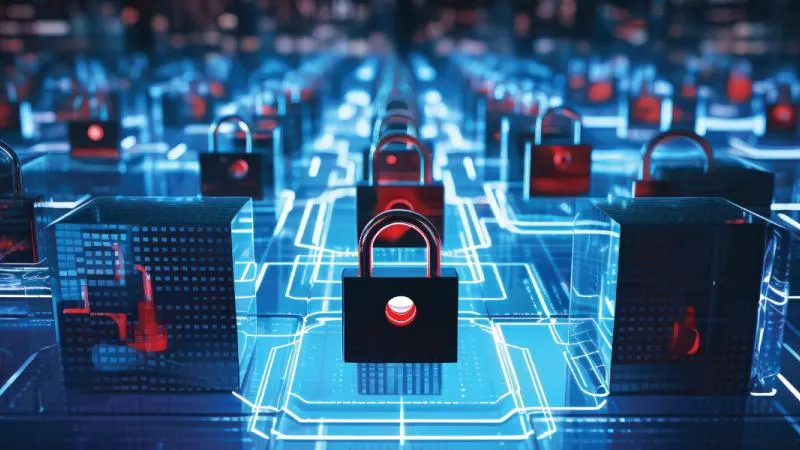The Growing Threat of Cyberattacks
The digital world is under attack! Cybercriminals are becoming more advanced, targeting businesses, governments, and individuals like never before. With the increasing use of technology, cybersecurity concerns have reached an all-time high in 2025. Hackers are exploiting weak security systems, stealing sensitive data, and causing financial losses worth billions. In this article, we will explore the alarming rise in cyberattacks, the major threats facing us today, and the steps we must take to stay protected.

The Rise of Cyberattacks: A Global Concern
Cyberattacks are increasing at an unprecedented rate. Governments, businesses, and individuals are struggling to keep up with the evolving tactics of cybercriminals. Some shocking statistics reveal:
- A 300% rise in cyberattacks compared to previous years.
- Over $10 billion lost globally due to cybercrimes in 2025.
- A 40% increase in ransomware attacks targeting businesses and public institutions.
- 80% of businesses admit they are not fully prepared for cyber threats.
These numbers show how serious the cybersecurity crisis has become and why immediate action is needed.
Major Cybersecurity Threats in 2025
1. Ransomware Attacks: Holding Data Hostage
One of the biggest threats in 2025 is ransomware. Hackers encrypt important files and demand money to restore access. Some recent high-profile attacks include:
- A major hospital system in the U.S. was forced to pay $20 million to regain patient records.
- A global shipping company lost millions in revenue after a ransomware attack disrupted its operations.
How to Stay Safe:
- Always back up important data.
- Use strong security software and firewalls.
- Avoid clicking suspicious links or downloading unknown attachments.

2. Phishing Scams: Tricking Users into Sharing Information
Phishing scams have become more sophisticated, with hackers sending fake emails, texts, or even social media messages that look real. These scams trick users into revealing passwords, credit card details, or other personal information.
Recent Examples:
- A fake email claiming to be from a major bank led to thousands of customers losing their money.
- Social media phishing scams increased by 150% in 2025.
How to Stay Safe:
- Never click on links in suspicious emails.
- Always verify the sender before sharing sensitive information.
- Use two-factor authentication for extra security.
3. Data Breaches: Massive Leaks of Private Information
Data breaches have exposed millions of personal records in 2025. Cybercriminals steal and sell sensitive information on the dark web, leading to identity theft and financial fraud.
Recent Examples:
- A popular e-commerce site had 50 million user accounts hacked.
- A major social media platform suffered a leak of private messages from 30 million users.
How to Stay Safe:
- Use unique passwords for different accounts.
- Regularly update and change passwords.
- Enable account alerts for suspicious activity.

4. AI-Powered Cyberattacks: Smarter and More Dangerous
Hackers are now using artificial intelligence (AI) to launch more effective cyberattacks. AI-powered malware can learn and adapt, making it harder to detect.
How to Stay Safe:
- Invest in AI-driven cybersecurity solutions.
- Keep software and security systems updated.
- Train employees to recognize AI-driven cyber threats.
5. Supply Chain Attacks: Hacking Through Third-Party Vendors
Many businesses rely on third-party vendors for their operations. Hackers target these vendors to gain access to bigger companies and their data.
Recent Example:
- A major IT service provider was hacked, leading to hundreds of businesses being compromised.
How to Stay Safe:
- Work only with trusted vendors with strong cybersecurity policies.
- Conduct regular security audits.
- Limit third-party access to critical systems.
6. IoT Vulnerabilities: Hacking Smart Devices
The Internet of Things (IoT) connects smart devices like security cameras, thermostats, and home assistants. However, weak security in these devices makes them easy targets for hackers.
Recent Example:
- A hacker took control of thousands of smart home devices, causing panic and security risks.
How to Stay Safe:
- Change default passwords on all smart devices.
- Regularly update firmware and security settings.
- Disconnect unused devices from the internet.
7. Cryptocurrency Scams: Digital Money at Risk
As cryptocurrency becomes more popular, hackers are finding new ways to steal digital assets. From fake investment schemes to hacking crypto wallets, millions have been lost in 2025.
Recent Example:
- A fake crypto trading platform scammed investors out of $500 million before shutting down.
How to Stay Safe:
- Use only reputable cryptocurrency exchanges and wallets.
- Double-check URLs before logging in.
- Enable two-factor authentication for crypto accounts.
The Future of Cybersecurity: What Needs to Be Done?
Governments, businesses, and individuals must take cybersecurity seriously. Here’s what we need to do:
1. Stronger Laws and Regulations
Governments must implement stricter cybersecurity laws to hold companies accountable for protecting user data.
2. Better Cybersecurity Training
Employees should receive regular training on how to identify and prevent cyber threats.
3. Increased Investment in Cybersecurity
Companies must invest in advanced cybersecurity measures, including AI-powered security tools.
4. Public Awareness Campaigns
Raising awareness about cybersecurity risks can help people stay vigilant and avoid falling victim to cybercrimes.
Conclusion: Stay Alert, Stay Safe
The rise in cyberattacks is a wake-up call for everyone. Cybercriminals are evolving, but by staying informed, using strong security measures, and practicing caution, we can reduce the risks. Whether you’re a business owner, a government official, or just an everyday internet user, cybersecurity should be a top priority in 2025 and beyond. Protect your data, safeguard your identity, and stay one step ahead of the hackers!
Do Follow USA Glory For More Updates.






